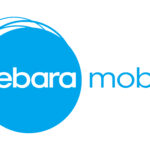
In today’s interconnected world, the concept of privacy has taken on a new dimension with the emergence of the metaverse. As the metaverse rapidly expands and evolves, ensuring the security of our virtual identities and digital assets becomes paramount. In this comprehensive exploration, we delve into the intricacies of privacy and security within the metaverse, providing valuable insights and security best practices for navigating this exciting new landscape.
The Metaverse Unveiled
The metaverse, often depicted in science fiction, is a vast virtual universe where people interact, socialize, work, and play through digital avatars and environments. It’s a space where the boundaries between the physical and digital worlds blur, and it holds immense potential for innovation and collaboration.
Understanding the Metaverse
To begin our journey, let’s understand the metaverse. It’s a collective virtual shared space, created by the convergence of virtually enhanced physical and digital realities. In the metaverse, users can engage in a myriad of activities, from attending virtual conferences and concerts to exploring fantastical landscapes.
The Metaverse’s Impact on Privacy
As we venture deeper into the metaverse, we must consider its implications on privacy. With the fusion of digital and physical experiences, our personal data is more vulnerable than ever. Unauthorized access, data breaches, and identity theft are real threats, necessitating robust security measures.
Security Best Practices in the Metaverse
Now that we’ve gained insight into the metaverse, let’s explore security best practices to protect our digital presence and assets.
Secure Your Digital Identity
In the metaverse, your digital identity is a precious commodity. To protect it:
- Use strong, unique passwords for each virtual account.
- Enable multi-factor authentication for an added layer of security.
- Regularly update your digital avatar’s appearance to deter impersonation.
Encrypt Your Communications
Just as in the physical world, private conversations should remain confidential. Ensure your virtual communications are encrypted to prevent eavesdropping and unauthorized access.
Be Mindful of Location Data
Many metaverse platforms track your virtual presence. Be cautious about sharing location data, as it can reveal personal information.
Beware of Phishing Scams
Phishing scams are prevalent in the metaverse. Be skeptical of unsolicited requests for personal information and verify the legitimacy of communication channels.
Choose Reputable Platforms
Opt for established and reputable metaverse platforms with strong security measures in place.
Protecting Your Virtual Assets
Within the metaverse, digital assets such as NFTs, virtual real estate, and cryptocurrencies hold significant value. Protecting these assets is crucial.
Use Secure Digital Wallets
Store your digital assets in secure wallets, and regularly back up your wallet data to prevent loss.
Educate Yourself
Stay informed about the unique threats and challenges of the metaverse. Understanding these risks will help you make informed decisions.
Employ Decentralized Solutions
Decentralized technologies, such as blockchain, can enhance security by reducing the risk of centralized data breaches.
Final Words
As we navigate the exciting but complex terrain of the metaverse, privacy and security should be at the forefront of our concerns. By implementing the security best practices outlined here and staying informed about emerging threats, you can enjoy the metaverse with confidence, knowing that your digital presence and assets are well-protected.
Commonly Asked Questions
1. Is the metaverse safe for children?
While the metaverse offers tremendous opportunities for learning and creativity, it’s essential to monitor and guide children’s activities in virtual spaces. Parental controls and education about online safety are crucial.
2. What are some emerging security technologies in the metaverse?
Technologies such as blockchain for asset protection, advanced encryption methods, and biometric authentication are becoming more prevalent in the metaverse to enhance security.
3. How can I protect my NFT investments in the metaverse?
To safeguard your NFTs, use secure wallets, follow security best practices, and be cautious about sharing private keys or engaging in risky transactions.
4. Are metaverse platforms doing enough to ensure user security?
Metaverse platforms are actively improving security measures, but the responsibility ultimately lies with users to take precautions and stay informed about potential risks.
5. What should I do if I suspect a security breach in the metaverse?
If you suspect a security breach, report it to the platform or service provider immediately, change your passwords, and monitor your accounts for unusual activity.
Advertisement







